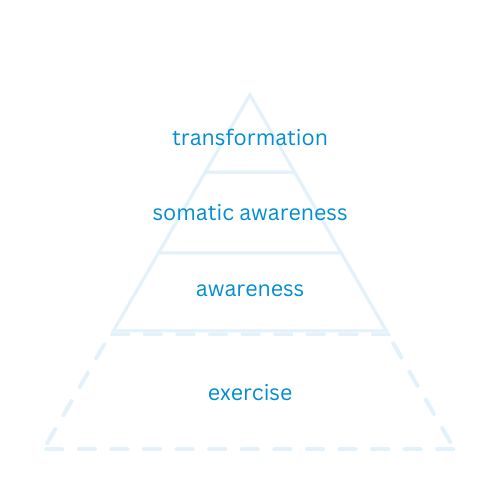How gentle movement can overcome mind gremlins, limiting beliefs and emotional issues
This is for educational purposes only. If you are suffering from any mental or physical health issues, you are advised to seek the help of a professional.
Overview
In this course, you will learn about the EAST Method, a powerful embodiment transformation approach, which uses tai chi and chi kung movements to overcome emotional issues such as stress, worry, anger, addictions, and limiting beliefs that can hold you or your client back from experiencing a truly amazing life.
Introducing the EAST Method

It is well-known that beliefs and emotional issues can hold you back from achieving your goals, and in order to overcome such gremlins, most coaches and therapists will use cognitive approaches.
Techniques such as EFT, acupuncture, meditation and counselling and therapy can help with emotions but sometimes it is easier to focus on movement rather than using (seated) talk therapy and other physically passive modalities especially when you’re feeling overwhelmed by thoughts or you spend much of your day sitting down.
How can movement help?
When you get angry, it is an emotion that causes a reaction whether it’s verbal (shouting/arguing back), physical (clenching your fist/slapping someone) or a though (judging/namecalling in your mind), but did you know that it also has a more subtle reaction in the body? Perhaps you’ve noticed this in the form of some kind of automatic physical sensation such as heat, emptiness, pressure or tingling?
thought → emotion → energy block → physical sensation → disease
It is gradually becoming more accepted and understood that emotions can become stuck in the body and create restrictions in our movement. These emotions also create energy blocks. According to Traditional Chinese Medicine, if this stagnant energy (chi) is not encouraged to flow again, it can create physical disease.
The session left me feeling calmer and with an inner stillness that I know, when practised regularly, will help me find more day-to-day resilience. I am very excited to share the EAST method with clients to explore where they hold their limiting beliefs in their body and how we can release these trapped stories. Thank you, Darren!
Joanne Howard
Having trained in chi kung and tai chi since the 1980s and also qualified as an EFT practitioner, I have been inspired to put together chi kung exercises that can help to shift this energy and reduce emotional issues that lead to illness but also limiting beliefs and mindset issues.
And so the belief, thought pattern or event has still occurred but you feel no negative emotion towards the belief, thought or event, and so can move forward unaffected by your history.
This means that how you act and the choices you make will not be influenced by past occurrences.
Addiction, stress, anxiety, depression – these are just some symptoms of your past that will dissipate through this work.
Actually amazing!
SF, Kingston
How do these exercises actually work?
Yin answer: These exercises involve twisting and flowing movement with focused thought that release the stagnant energy, freeing the blocked energy.
Yang answer: From a physical perspective, emotions can be trapped in the body – in both the muscles and the fascia. These exercises encourage a fuller range of motion and people find that the emotions can be released fairly quickly once the work begins.
As with EFT, it is not about distracting yourself from the issues you’re dealing with. In fact, you have to focus on the issues in order to overcome them.
I was sceptical, initially, but Darren encouraged me to continue with the therapy. I’m glad he did because it totally turned my life around! I have a new found lease of life and look forward to the future. I can’t thank him enough!
JM, York
What can this technique help with?
It’s worthwhile trying it with everything, but I have found it to work with stress, anxiety, limiting beliefs, anger, addiction (and the underlying causes),
Are there any contra-indications?
If you are taking medication for depression or any other mental health conditions then it is advised to avoid doing these exercises as the outcomes are unknown.
Additionally, any movement that might aggravate a physical illness such as a broken shoulder should be avoided.
It might also be wise to avoid too much twisting and bending of the torso if you have diarrhoea!
So what’s the process?
The process is formally known as the EAST Method. This method outlines the four stages to healing.
Exercise →
Awareness →
Somatic sensing/awareness →
Transformation
I was lucky enough to have a session with Darren to try to shift my embedded limiting belief around not being able to have a successful business – my “mind gremlin” as Darren put it.
Tansy Muller
Darren spent time taking me through a series of movements while coaching me about my mindset and, although I was quite sceptical, I felt a profound shift in what I had believed for so long.
Darren was extremely patient and really took his time to make me feel comfortable and I felt secure and safe in being vulnerable about my mindset.
I found myself at a 10 when I commenced the session with Darren and felt my belief was 100% true. Darren helped me identify where in my body I was feeling the limiting belief and, incredibly, after about 20 minutes of repeating and changing the movements accordingly, Darren had helped me shift my limiting belief so that it was difficult to feel it at all.
I would thoroughly recommend Darren and his method of working – he’s sensitive, kind and completely non-judgemental and really knows his stuff.
1. Exercise
This covers physical movement. We were designed to move and, as you know, it’s good for us and should be done regularly.
However, while we might be getting physically fitter and burning fat, plus it might feel good, what we’re not doing is developing our ability to self-regulate nor are we developing good mental habits.
I say this because we might be doing yoga but comparing ourselves to the person next to us or we might be playing tennis but getting annoyed with ourselves as we lose a match.
So we are training ourselves to develop bad mental habits.
2. Awareness
A stands for Awareness, or more specifically, non-judgemental awareness also known as mindfulness. Mindfulness is great for developing good mental habits of focus and non-judgementalism ie learning to be compassionate to ourselves and others, and not judging people or situations.
This habit can help us to develop a long term sense of inner calm and means we can more quickly overcome negative events in our lives.
This practice also includes focusing on sensations whether it is the sensation of the breath or sensation of the body.
Notice the feeling of your breath feel inside the nostrils without judging it.
Notice the feeling of your jumper on your skin without judging that feeling.
Notice how your sleeves move across your forearms when you swing them – without judging that feeling.
Notice how your muscles activate and relax – without judging that feeling.
This is the beginning of coming back to the body and overcoming mental blocks.
I joined the masterclass on somatic movement. It was a very interesting mix of theory and gentle physical movement which showed just how the EAST Method can work successfully with clients. Darren’s natural warmth and expertise made this an enjoyable webinar.
Julie Pearson
3. Somatic sensing
This is about noticing your biography within the body ie feeling sensations in the body that represent emotions or the sub-conscious.
The sensations you feel within the body and the way you move your body can reflect what is going on in your head.
Why does one arm swing more freely than the other?
Why do you prefer to lean to one side more than the other?
Why can’t you raise one arm freely when you haven’t injured it?
How does it feel emotionally when you stretch upwards?
What thoughts come up when you lean backwards, arms raised?
4. Transformation
Now that we have established awareness of the body and how it embodies emotional and mental health issues, it’s time to move beyond that which is holding us back.
And so by focusing on the specific issues (and even just the sensation) while moving, we can achieve healing and move forward without our past affecting our choices – we are using movement to re-write the biography.
The great thing is that you don’t have to be able to verbalise or describe it but doing so can help.
(This was originally called Therapeutic Intervention but it restricts the Method to therapists and the EAST Method can be used by coaches as well.)
Hi Darren, thank you so much I was very surprised by how effective that one session was. You are so gentle, wise & clearly very experienced. My energy blocks shifted. This was evident because physically I felt tingly and lighter, and mentally because the issue of procrastination had dropped from 8/10 to 3/10.
Sally Jackson
I would recommend anyone to try working with you!
Videos
These videos are for educational purposes only.
Workshops
This is a recording of the Intro to the EAST Method workshop that I ran on 11/1/21.
In this video, we start with a warm up then explore the first 3 elements of the EAST Method: Exercise, Awareness, Somatic Awareness/Sensing. We cover just 5 movements in the basic routine used.
Such simple techniques that can make quite a difference to how you feel afterwards. Thank you Darren for giving the taste of your EAST Method.
Claryn Nicholas
Demo
In the following demo, you can see examples of coaching using the EAST Method. This is just my style and you are of course encouraged to use it in a way that works for you with your own style of interacting with your clients, but you can see the intuitive and flexible nature of how I apply the EAST Method to overcome limiting beliefs.
Demo of mindset coaching session to deal with limiting beliefs; dealing with feelings of disappointment, letting parents down, shame and embarrassment.
If you would like to view more training, look at more demos and learn a wider range of movements from 4 routines then please subscribe to Life Library.

